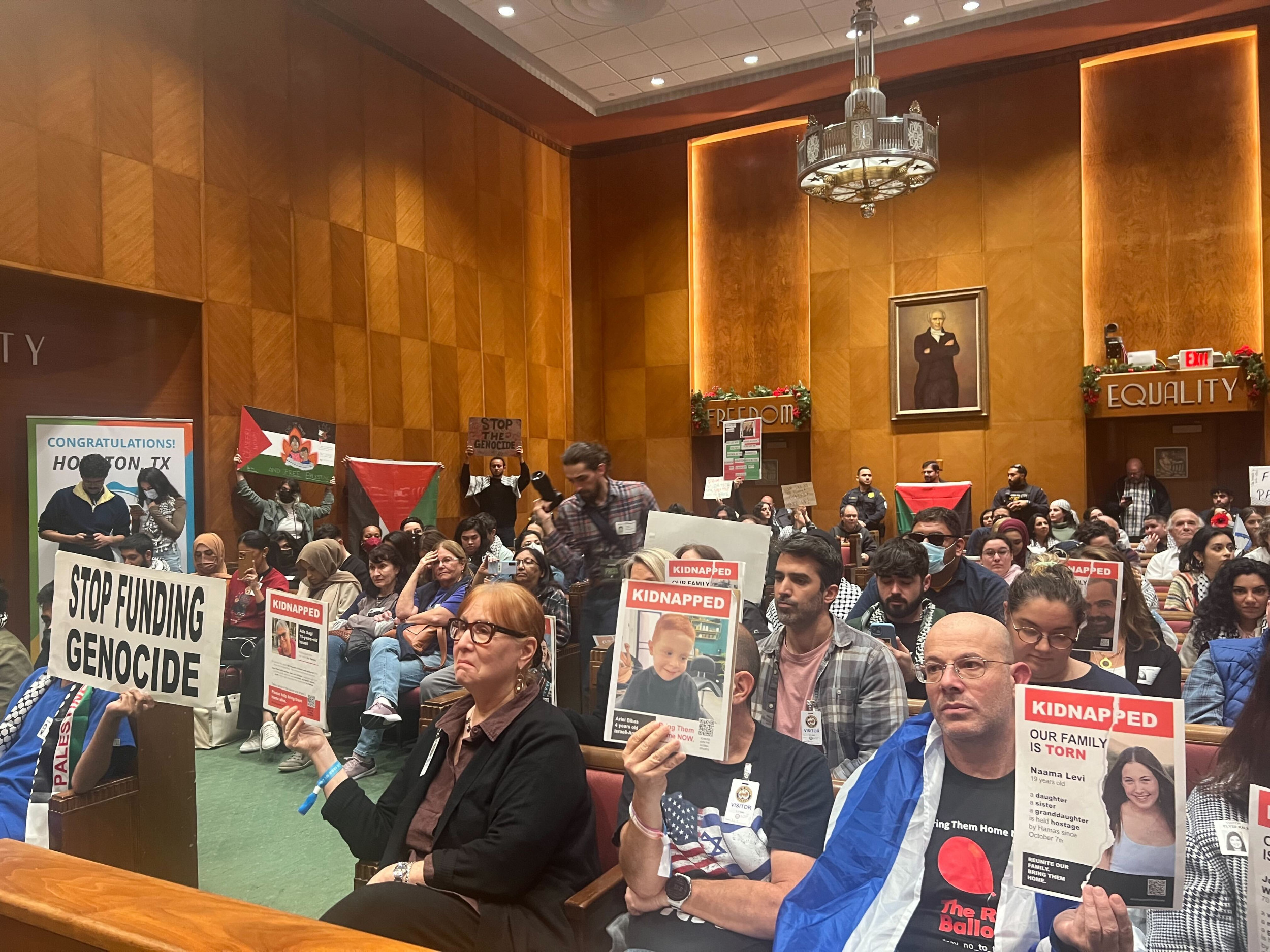Shortly after dawn on Friday, March 17, Credonia Mwerinde flagged down a bus leaving her village for the Ugandan capital, Kampala. Boarding the vehicle, she walked slowly down the aisle, closely studying the face of each passenger. They didn't know it, but Mwerinde, 52, had begun the biggest cult murder in modern history, say Ugandan police.
Over the previous 10 years, the former bar owner, who claimed to speak to the Virgin Mary, had built a cult that made her wealthy and gave her absolute control over thousands of half-starved followers. With a dozen or more accomplices, she appears to have killed as many as 2,200 to 3,000 members of her Movement for the Restoration of the Ten Commandments of God, a group that preached repentance before the end of the world in the year 2000. Most of the victims--half of them children--had been poisoned. Those who had not died quickly and quietly had been garroted and knifed or had their skulls crushed. That spring day in Kanungu, they lay buried in several mass graves--naked, stripped of all identifying features and stacked with chilling efficiency in pits they had dug themselves. Now that the final act was about to begin, Mwerinde had to make sure no one from her flock was trying to escape, authorities say. Finding none on board, she wished the passengers a safe journey and walked back to her compound.
The stage was set. All but a few of the last surviving cult members--600 people, mainly women and children--had eaten a breakfast of porridge after an all-night prayer vigil. On Mwerinde's orders, they had burned their belongings. They had washed, clipped their nails, shaved their hair with cheap Chinese razors and put on their green and white uniforms. Investigators said she summoned them into the "Ark," a rude church lined with 68 (1,036-liter) jerrycans filled with gasoline. Cult leaders nailed the doors and windows shut; investigators believe that farm manager Robert Kagangura may have set the fire. When it was lit, everybody inside the church perished in a fireball so intense, skulls exploded. By then, police believe, Mwerinde had slipped away. They think she is still alive, probably in neighboring Congo.
No one can be certain. But a NEWSWEEK investigation sheds new light on the tragedy. Dozens of interviews with survivors, former cult members, local officials and Mwerinde's relatives and neighbors shattered much of the received wisdom about the massacre and the woman. Among the findings: the mass murder was reportedly not the first time Mwerinde had killed; she could be violent and vindictive and was possibly mentally unstable; she was obsessed by fire, and a possible motivation for the final murder may have been to squelch a rebellion after the cult's nominal leader died. Other details include how the fire was set and what happened to at least some of her likely accomplices.
In the weeks that followed, police discovered four mass graves in the Ugandan countryside at branch compounds of the cult. In all, 979 bodies were counted, exceeding the 914 members of the Rev. Jim Jones's cult who died in Jonestown, Guyana, in 1978. The real death toll was certainly much higher, but the exact figure may never be known. "There are many more graves, we know that," says Asuman Mugenyi, the national police spokesman. The police don't have the resources to look for them. "We tried, but there isn't much interest, and there is no money," he added.
At first, investigators thought Mwerinde and her subordinates were trying to suppress an insurgency. On joining the cult, recruits sold their property and gave the proceeds to the leadership. They did so in the belief that the world would end in the year 2000. When New Year's Day came and went, investigators reasoned, members must have demanded their money back. But interviews cast doubt on that theory. The cult's constitution, written by Mwerinde, said the world would end "before the completion of the year 2000." In March the year still had a long way to go. "All she said was that there would be no year 2001," said Peter Asibihibwe, 17, a cult member who survived because he sneaked out of the compound the morning of the fire to look for sugar cane.
Authorities are mystified over how Mwerinde could have managed to have so many people killed in the earlier massacres--in cult compounds across Uganda--and keep it secret. But after the fire, one clue was found in a latrine pit next to Mwerinde's bedroom. Drawn by the stench, officials discovered the bodies of six burly men partly dissolved in sulfuric acid--the executioners, police theorized, who had carried out the earlier massacres. Five had been poisoned to death and one killed by a blow to the head. Most disturbing is that, were it not for the smell of rotting flesh, the murder of the last 600 cult members would have been dismissed as suicide, no investigation would have been launched and no mass graves would have been uncovered. "It would have been the perfect murder," said investigator Eric Naigambi.
Why would she have done it? NEWSWEEK's reconstruction of Mwerinde's career suggests that, early on, the woman, eventually called "The Programmer," displayed a violent streak, a fascination with destruction by fire, and a lust for money. While in her early 20s, she torched the household belongings of a local health official who had jilted her; the family sent her away for treatment and on her return she said she had been "mentally disturbed," according to Nalongo Rukanyangira, a childhood friend her age. In those years, with Uganda convulsed by the genocidal rule of Idi Amin, Mwerinde owned a bar in Kanungu. She seduced a motorist who was passing through, killed him while he slept and kept the money, according to a letter written by a close family friend. Very early in the morning people came to get beer, and they found her washing blood off the concrete," the letter reads. She once led followers on a punishment raid of a relative who had refused to join the cult; the group burned his banana plantation. All three of her brothers died off, one by one, until she was the sole owner of the land that eventually became the cult's headquarters. Poison, the same murder weapon that police now say killed most of the cult members, is suspected in those deaths. "She is crazy, and she is a murderer," charges Dr. Thaddeus Barungi, chief pathologist in the investigation.
When the time came for the final massacre, cult members were in no condition to resist. Their daily routine was arduous. They were awakened at 3 o'clock every morning for two hours of prayers; they fasted two days a week and on the other five days were fed next to nothing. When their children--desperate from hunger--were punished for catching and eating insects, they acquiesced. And when they were infested with scabies, they didn't complain. Followers had sworn absolute poverty, chastity and obedience. They slept on the floor, washed with coarse laundry soap and observed strict silence at all times. They were never allowed to speak to their immediate superiors, much less to the 12 supreme leaders of the cult (a management structure based on the 12 Apostles).
Fatigue, hunger and faith led to blind obedience. "I believed [living that way] would save me," said Catarina Nansana, a 72-year-old woman expelled from the cult last October when her daughters embarked on a crusade to bring her home. "I had sores on my feet, my arms and my legs, but I didn't care. I believed what I was doing was right." Another former cult member, Mary Kasambi, said, "Credonia could say, 'Today we are going to dig for one week. Today we are not going to eat for three days,' and we wouldn't." Kasambi, 42, left the cult in 1997, after she saw her four young children foraging for grasshoppers to eat. "Credonia would get a program from heaven, from the Virgin Mary, and she would transmit it to us. Our job was to obey. I don't believe people went to Credonia asking for their money," Kasambi added. "You didn't ask questions."
People who knew Mwerinde said greed was the driving force in her life. "She was never as happy as when she was making money," said her ex-husband Eric Mazima, who sold his land and evicted his second wife to become a partner in Mwerinde's bar. Over the years, police say, stealthy murder became a tool she used to accumulate wealth and to silence potential accusers. Family members and acquaintances said escaping with her followers' money would not have been enough for Mwerinde; she also had a lifelong need to eliminate anyone who knew her intimate secrets. Killing her flock would have done that--and making it look like a collective suicide would have prevented her from being suspected of mass murder.
Mwerinde's bar went broke in 1989. That was when she converted to Roman Catholicism, claimed to have seen the Virgin Mary in a cave just outside Kanungu and enlisted the help of two respected local clerics to build her apocalyptic cult. Why did they consent? Mwerinde was persuasive and intelligent. Described universally as beautiful--with soft skin, a flawless complexion and a dulcet voice--she also appeared deeply devout. She fasted regularly, slept without a mattress, never smiled, and blacked out periodically during conversation to receive "messages" from the Virgin Mary. She spent hours praying and writing, and, having been a bar owner who neighbors say at least occasionally sold her body, possessed the added mystique of being a converted sinner, a sort of Mary Magdalene.
For the first three years after her vision, Mwerinde lived in the household of Joseph Kibwetere, a pious Catholic who was headmaster of a respected private boarding school. His conversion to Mwerinde's beliefs gave the movement instant respectability. Kibwetere had a fascination with visionaries. He had driven with his wife to Rwanda to witness apparitions and devoured books on Our Lady of Fatima and of Lourdes. When Mwerinde told him not only that she had had a vision of the Virgin, but that Mary had told her a man named Joseph Kibwetere was going to help her restore the Ten Commandments, he was flattered, struck by his importance in the scheme of salvation. Kibwetere's family finally threw the prophetess out of the house (believing she was having an affair with the man) after Mwerinde allegedly set fire to his wife's wardrobe and beat her up. Soon after, Kibwetere moved into Mwerinde's compound and became the nominal leader of the cult.
The killings that preceded Mwerinde's disappearance occurred over a period of several months. Cult followers, who now numbered in the thousands, were transported to one of the movement's dozen rural outposts. The poison was given to them with their evening meal. "It was a fast-acting poison," said Barungi, the pathologist, not knowing which. Even so, he said, there must have been a period of several minutes during which the hardiest victims would have attempted to scream or run away. "We believe those were the people who were strangled or hit over the head," said Barungi. "Imagine strangling a child who is not dying quickly or quietly enough."
The killings were carried out in complete secrecy. Despite African villages' famed nosiness, no one was the wiser. Neighbors say they heard no shouts, only the sound of vehicles coming and going at night and, in two cases, the sound of digging. "They told us they were digging latrines," said Teresa Kibesamire, 60, whose house stands less than 50 feet from one of the graves. In fact, cult members were digging their own graves.
Disposing of the bodies was hard work. The victims had to be stripped, their clothes incinerated and their corpses lowered into pits 10 to 15 feet deep. "They weren't just buried," said police spokesman Naigambi; "they were tightly packed." A mass grave found on the property of Dominic Kataribabo, a defrocked Roman Catholic priest identified by the police as Mwerinde's closest accomplice, made prisoners assigned to the exhumation of the bodies recoil. Inside a pit no more than eight feet by eight feet, the prisoners found skeletons stacked so closely together it was impossible to distinguish one corpse from another; they had to extricate hip bones from collarbones.
Police believe the chief killers included Kataribabo, Joseph Kapurare, another defrocked Catholic priest, and Kagangura, the farm manager, along with a dozen or more of their subordinates. "We are looking for the operational cadre, that middle tier of leadership," said Naigambi. "Credonia could say, 'Kill those men,' and they would be killed. They were so brainwashed, they would do everything they were told."
Mwerinde apparently played off fear of the Devil to persuade her closest aides to commit mass murder, say investigators. Several former cult members described how she fostered a visceral, overpowering fear of demonic intrusion into the cult. Every object that came from the outside--money, clothes, food, medicine--had to be exorcised with prayer. "She said the Devil was everywhere," recalled former member Kasambi. Even the cult's children were terrified of the Devil. Mwerinde may have said the Virgin told her the killings were needed to rid the community of evil.
Another hypothesis suggests that Mwerinde may have been trying to suppress a growing skepticism about her powers and those of the other leaders. Doubt may have grown as the result of Joseph Kibwetere's death. Several survivors said that he had not been seen or heard from in months, and his estranged wife Teresa said that he died of some degenerative disease last October. Although Mwerinde ran things, she had transformed Kibwetere into a kind of Christ figure. He wore a Catholic bishop's robe and ring, and he alone was allowed to ordain young men into the cult's priesthood. "Credonia used him because of his money and because he was a man," Teresa said. Police say his death may have sparked defections that threatened Mwerinde's rule, forcing her to commit mass murder or risk losing her power and her wealth.
The six strong men who probably did most of the burying over the many months of death ended up in a grave of their own, immersed in sulfuric acid. The chief killers may--or may not--have survived. Mwerinde herself is still listed as missing. Detectives are convinced she's still alive. They believe she and Kataribabo, the defrocked priest, walked across the frontier into Congo, perhaps fording a shallow stretch of the Ishaka River. Eastern Congo is a lawless land, infested with warring factions, including Hutu militiamen who fled to the area after their campaign of genocide in Rwanda. A manhunt in the area is out of the question.
Uncommon Knowledge
Newsweek is committed to challenging conventional wisdom and finding connections in the search for common ground.
Newsweek is committed to challenging conventional wisdom and finding connections in the search for common ground.
About the writer
To read how Newsweek uses AI as a newsroom tool, Click here.








